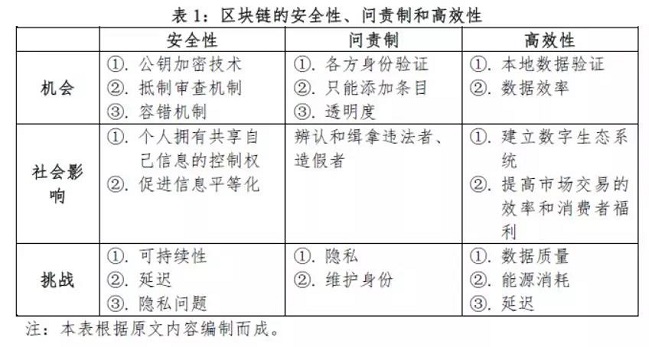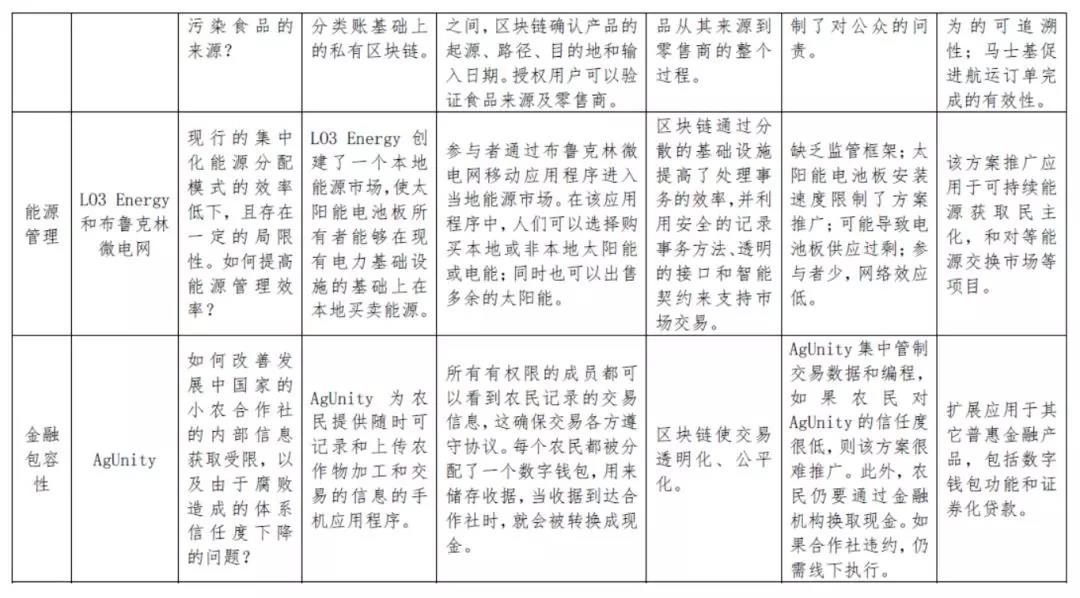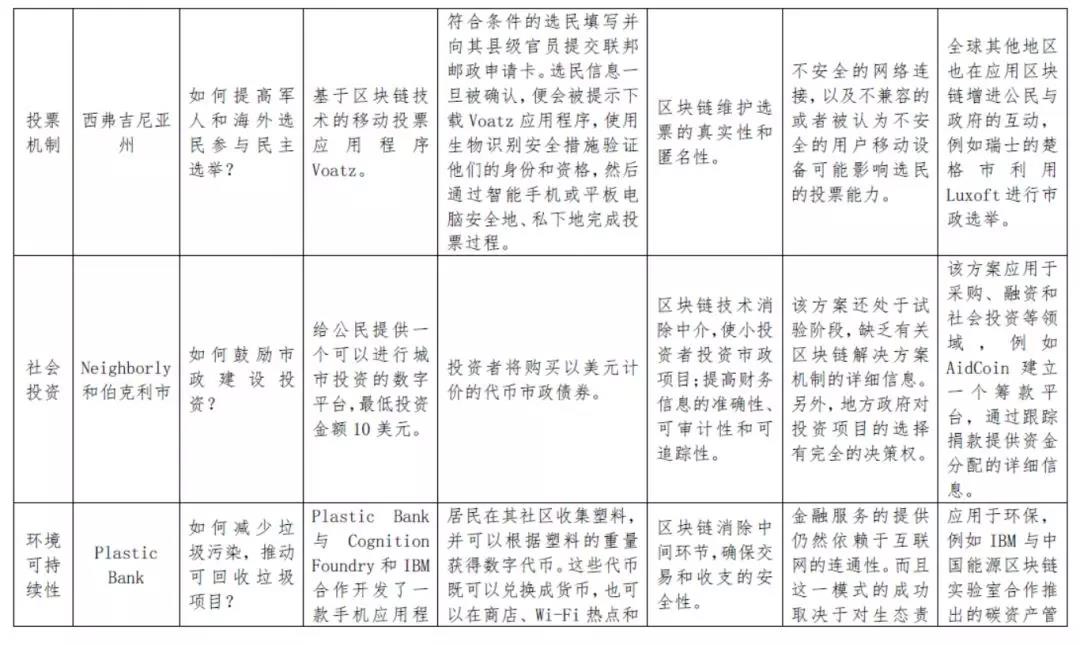Research Report | Blockchain and Social Innovation Blueprint
Founded in 1999, the New America Foundation is a non-partisan think tank. The think tank is a municipal platform that connects research institutions, technology laboratories, solution networks, media centers, and public forums to showcase, share, and extend local generation through a national and global network of public, private, and private partners. And test the US public problem solution.
In January 2019, the New American Foundation published a report titled "Blockchain and Social Innovation Blueprint," which shows the definition, operational mechanisms, and attributes of blockchain technology and presents globally Blockchain technology is applied to examples of various social problem solutions and proposes a framework for designing and developing a solution driven by blockchain. This paper interprets the results of this report, aiming to introduce, design and develop block-based blocks for Chinese governments, institutions and enterprises by presenting decision-making and planning frameworks for blockchain-based solutions and global application cases. Chain-driven solutions to solve various social problems (such as low institutional trust, lack of financial inclusion, environmental pollution, energy waste, false news, etc.).
I. Introduction
Blockchain technology has transformed the transition from financial services to agricultural supply chains and promises to create and secure value for all industries. This technology can not only help individuals expand their profits, but also improve their lives and society. This report introduces the definition, basic operating mechanisms and characteristics of blockchain technology, provides a framework for decision-making and planning blockchain-driven solutions, and presents nine global blockchain project case studies.
- Li Lihui, former president of Bank of China: Digital technology reform will reconstruct the economic model, China should seize the digital economic dominance
- Analysis: Aggregation Theory in DeFi
- Quantum Chain Shuai Chu: Only by jumping out of the "framework", the future application of blockchain can achieve greater development
Second, understand the blockchain technology
A blockchain is a distributed ledger technology that enables any Internet-connected user to transfer data and assets at any time, anywhere, with a high level of security and integrity, without the need for third-party intermediaries. "Identity" is the basis for the validity and security of the blockchain. After the initial user successfully establishes the identity on the blockchain, the "public key encryption system" process is used to verify identity and protect privacy, which effectively maintains the user's trust in the solution.
Blockchain involves a variety of sensitive data transmissions, including financial transfers, authentication, and more. It has very high requirements for the quality of the input data. If the initial input data quality is poor, a strict blockchain protocol can make the information difficult to change or delete.
An effective consensus mechanism will motivate the validator to validate valid blocks quickly and reliably. Blockchain systems typically have multiple computers or nodes that constantly process new updates. The "consistency mechanism" allows all nodes in the system to agree on the new content of the chain to ensure the integrity of the network.
The blockchain has three characteristics: security, accountability, and efficiency. Blockchain-based solutions may also involve trade-offs such as efficiency and security, and responsibility and privacy. Study each feature to understand how to enable meaningful opportunities and predict the challenges of successfully deploying blockchain technology. See Table 1 for details.

Third, blockchain solution decision-making and planning
Blockchain is not a technology that is suitable for solving most problems. How to determine the blockchain as the best solution? How to plan and design a solution based on blockchain technology? This section provides a framework and presents a few caveats.
(1) Prerequisites
There are generally two prerequisites for deploying blockchains – Internet connectivity and high quality digital data. Internet infrastructure is essential to the blockchain. Early data collectors want to ensure high quality data, because low quality data can cause “junk input” problems and become a long-term risk.
(II) Decision-making framework
Before entering the design process, you must first determine the blockchain solution as the best solution.
First, understand the requirements and determine if you need to introduce blockchain technology. There are two general situations in which blockchain technology needs to be enabled: one is that the leader has low trust in the database accessing the database and needs to maintain data isolation and integrity; the other is the lack of coordination of the problem environment, the participants The degree of trust is low, motivation is different, malicious competition tends, and data is disorderly.
Second, a cost-benefit analysis of potential alternatives to determine if the blockchain is the optimal solution. This includes comparing the cost and efficiency of blockchain solutions with existing intermediaries, as well as the cost-effectiveness of blockchain solutions and other alternatives. Through comparative analysis, it can be judged whether the blockchain will produce better results.
(3) Planning and design
After determining that the blockchain is the best solution, plan the design of the solution as follows:
First, establish an expert alliance to assist with planning and deployment. Expert alliances may include technical partners, regulatory or legal experts, users and stakeholders, third-party auditors or verifiers, and independent guidance (to balance alliance partners' interests and project goals).
Second, develop metrics for short-term and long-term goals.
Third, confirm the sensitivity of the data to define the transparency and openness of the blockchain scheme.
Fourth, build infrastructure for offline data acquisition. Blockchain technology relies on non-chain infrastructure such as trusted authentication, unique serial numbers, QR codes, and RFID tags to verify real-world commodity and business activities. In addition, each participant in the supply chain has to perform additional execution structures to ensure the integrity of the assets outside the chain.
Fifth, look for compassionate designers. They can truly understand the human problems and needs that are being tried to solve and promote well-made solutions.
Finally, develop strategies for potential challenges. Help to identify and resolve previously unknown challenges by asking questions and predicting stress.
(four) matters needing attention
When designing a blockchain solution, you need to pay attention to the following four points:
First, the blockchain is technically software, but its design and implementation are closer to the development model of hardware components.
Second, conduct pilot tests. The complexity and cost of designing, implementing, and extending blockchains is high, so organizations may need to conduct pilot trials over a longer period of time to reduce costs and avoid losses before rolling out a broader approach.
Third, improve the user experience. Designers need to use alliance support to make the process more user-friendly and to promote the program.
Fourth, reduce moral hazard. In the design and development process, special attention should be paid to the links that are prone to moral hazard, such as defining, granting and executing access rights and data ownership.
Fourth, the social impact of blockchain
Although the blockchain technology is still in its infancy, its application and positive impact have spread across many countries and regions around the world, involving various organizational groups and various socioeconomic classes (see appendix). Specifically, the sponsors of these projects come from organizations such as governments, non-profit organizations, and corporations; the range of social issues addressed by the program is very broad, including refugee assistance, improving financial inclusion, rebuilding institutional trust, supply chain tracking, Improve energy management efficiency, increase democratic voting election participation rate, promote municipal construction investment, garbage collection and combat media false news. These issues have been improved to varying degrees in view of the safety, efficiency and accountability of blockchain technology. However, case studies also suggest some of the challenges of current programs, including low-quality data, lack of public accountability in private blockchains, unstable network connectivity, low user trust (lack of user education), incompatibility of users' mobile devices, or Lack of standard security and complex user experience due to technical complexity.
V. Conclusions and future research directions
The cooperative relationship of human society is based on trust, but this trust is declining at an alarming rate. Blockchain provides reliability, security, and efficiency for record-keeping systems that help governments, institutions, and businesses rebuild trust between the communities they serve. In decision-making solutions, leaders must use a scientific analysis method to determine whether the blockchain is the optimal solution, and also plan the design for the development process.
The blockchain is still in its infancy, and technology experts, policymakers and academics will continue to advance the technology. This will affect potential and established blockchain deployments. To advance technology maturity, the New America Foundation identified eight areas of research that need to be strengthened in the future, including the digitization of offline assets and simulation data, the refining of effective identity solutions, the simplification of blockchain governance, and the development of laws for blockchains. Regulatory, development blockchain ethics, use blockchain to combat false information, incorporate differential privacy into blockchain solutions, and train future talent for blockchain solutions.




Interpretation: Institute of Financial Science and Technology, Tsinghua University, Internet Finance Laboratory, Tahara
Original from: New America Foundation
Source of this article: Weiyang
We will continue to update Blocking; if you have any questions or suggestions, please contact us!
Was this article helpful?
93 out of 132 found this helpful
Related articles
- Twitter Picks | Spring in Ethereum? BitPay Announces Support for ETH, $100 Million Real Estate Chain Ethereum
- The Queensland Real Estate Institute of Australia will launch a blockchain leasing agreement platform to empower the leasing industry with smart contracts
- Non-serious discussion on blockchain finance from "self-tearing" (2): reality and current situation
- In just one year, the founder of the coin printing moved the cheese of the old club
- With $394 USDT and $12,000 bitcoin, Kraken has a two-time price anomaly. Have you sold it?
- Viewpoint | Deposit Charges, Negative Interest Rate Era and Bitcoin
- Heavy! Yao Qian’s speech: Digital Assets and Digital Finance





